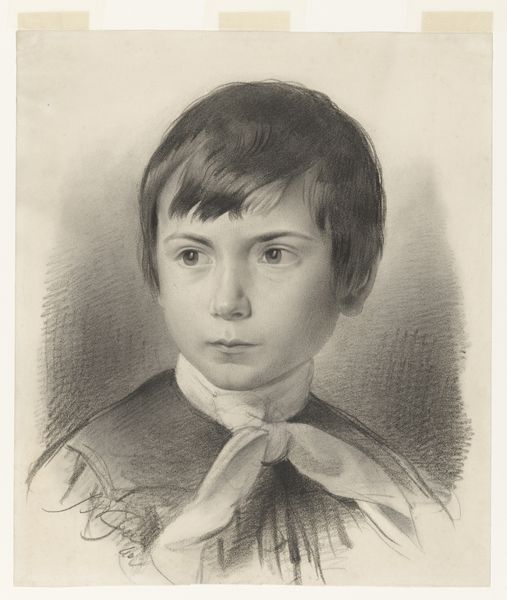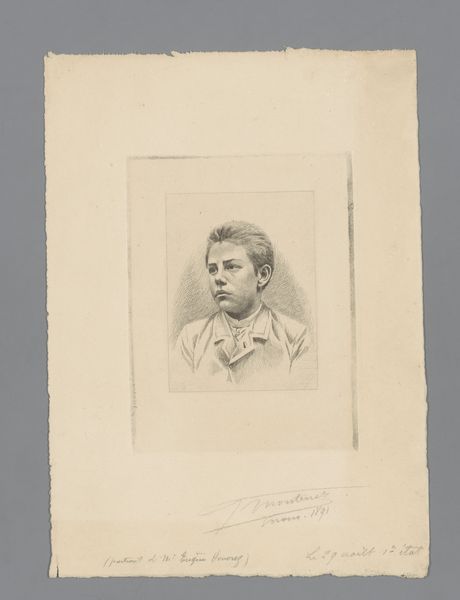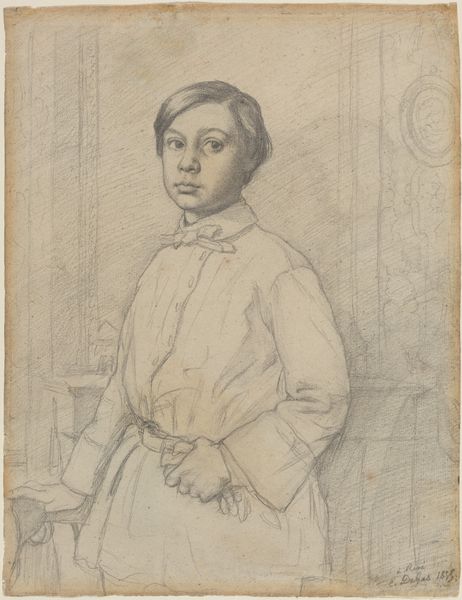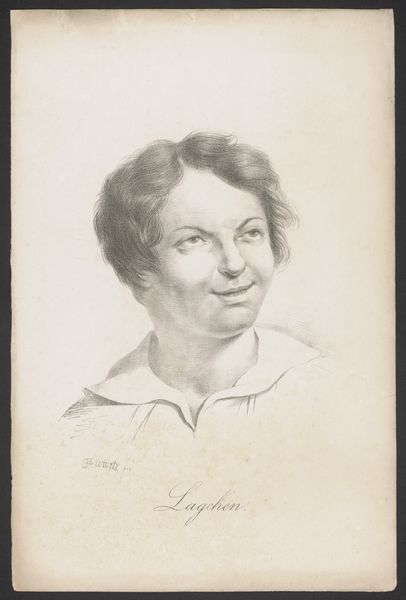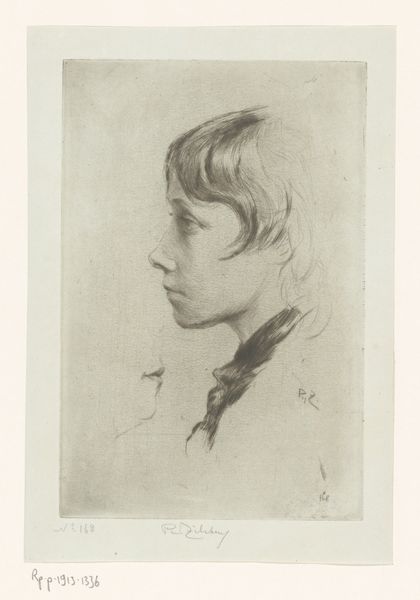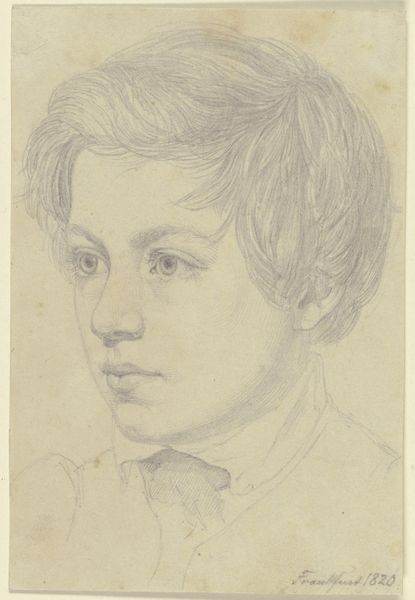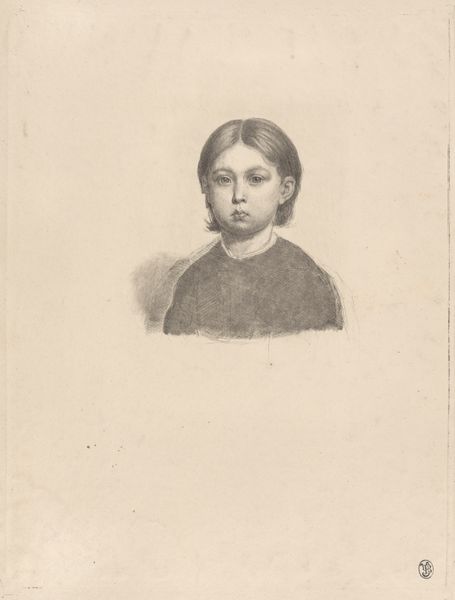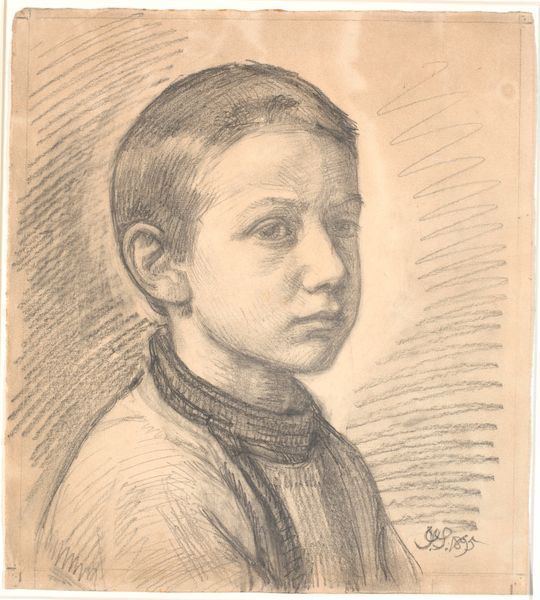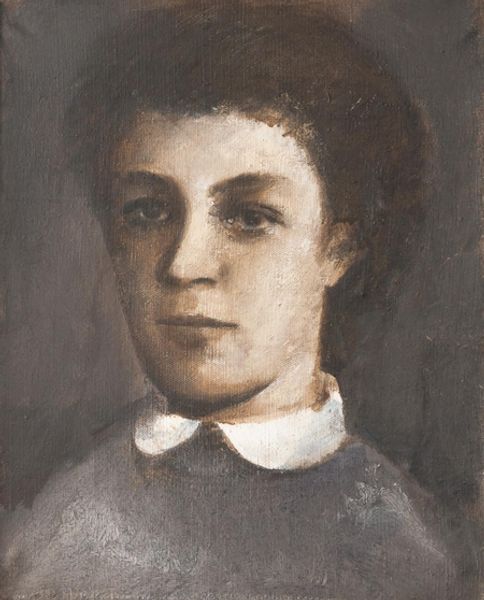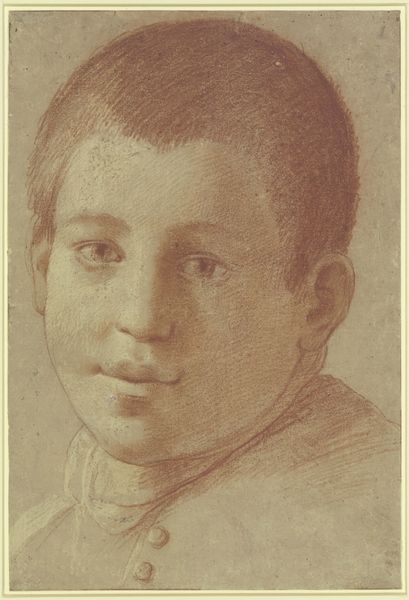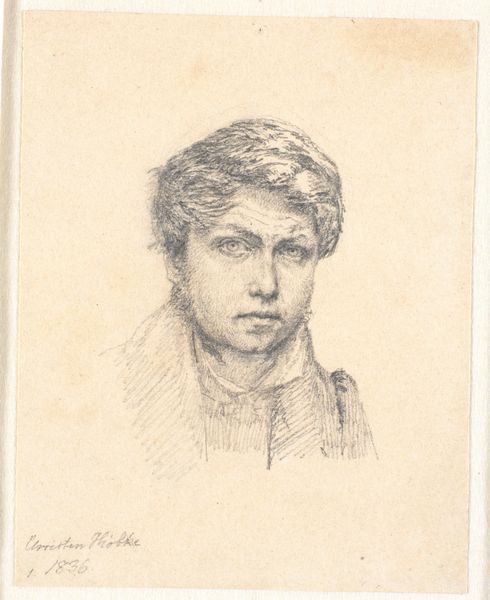
drawing, print, gouache, paper, ink, graphite
#
portrait
#
drawing
# print
#
gouache
#
caricature
#
paper
#
historical photography
#
ink
#
romanticism
#
graphite
Dimensions: 231 × 179 mm
Copyright: Public Domain
Curator: Here we have Wilhelm Girtner's 1845 portrait of Joseph Joachim, housed here at the Art Institute of Chicago. It’s a compelling work rendered with gouache, ink, and graphite on paper. Editor: It certainly has an immediate, almost unsettling intimacy to it. There's something about the muted tones and slightly averted gaze that feels quite vulnerable, like we're intruding on a private moment. Curator: Note how Girtner employs a limited palette, focusing primarily on earth tones contrasted with the crisp white of Joachim's collar. It draws the eye to the face, emphasizing the precision of line and modeling that create his likeness. We see masterful manipulation of light and shadow, characteristic of Romantic portraiture. Editor: It’s interesting to consider Joachim's later prominence as a renowned violinist and composer. This image predates his fame. I'm curious about the potential power dynamics at play in its creation. Joachim was only a teenager. Did he have agency in how he was presented? Was this portrait commissioned to elevate his status, or was it merely an exercise in representation for Girtner? The whiteness, in the form of a white shirt that he dons, adds to Joachim’s almost aristocratic outlook on display. Curator: Perhaps, but the technical facility on display shouldn't be ignored. The subtle gradations in the rendering of his hair, the soft blush on his cheek—these details elevate it beyond mere representation. It also demonstrates considerable skill in print production. This is where technique elevates craft. Editor: Agreed, but technique is never neutral. Art serves—knowingly or unknowingly—dominant ideologies. The formal elements are composed through the lens of gender and social class, the soft lines reinforcing a certain image of bourgeois masculinity in 19th century Europe. Looking closely, I cannot shake off the thought that Girtner attempts to establish certain social norms within society and time. Curator: So, where I appreciate the interplay of line and tone in depicting the youthful features, you focus on its possible historical implications? Editor: Exactly! This work offers us a space to explore how representation intertwines with power. Thank you for opening up the space. Curator: And thank you, for inviting a social conscience and political awareness, without sacrificing the artwork's material integrity.
Comments
No comments
Be the first to comment and join the conversation on the ultimate creative platform.
